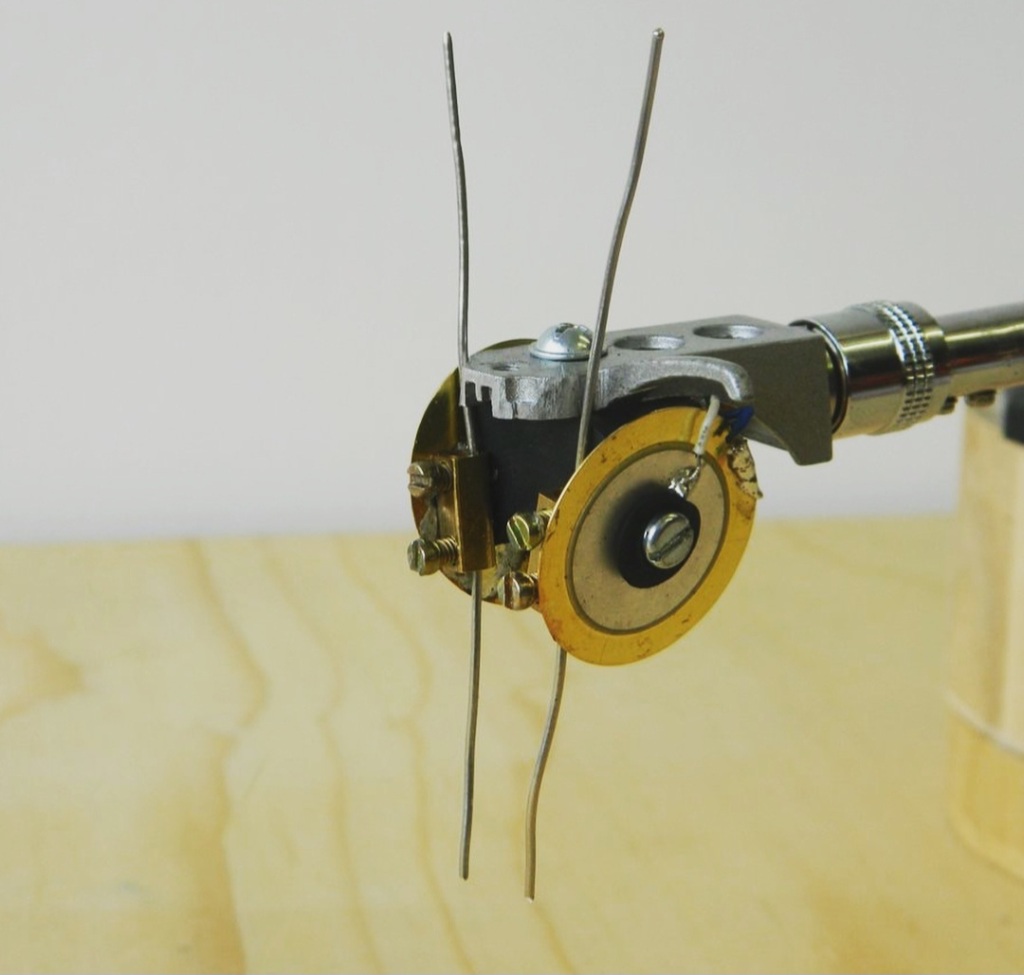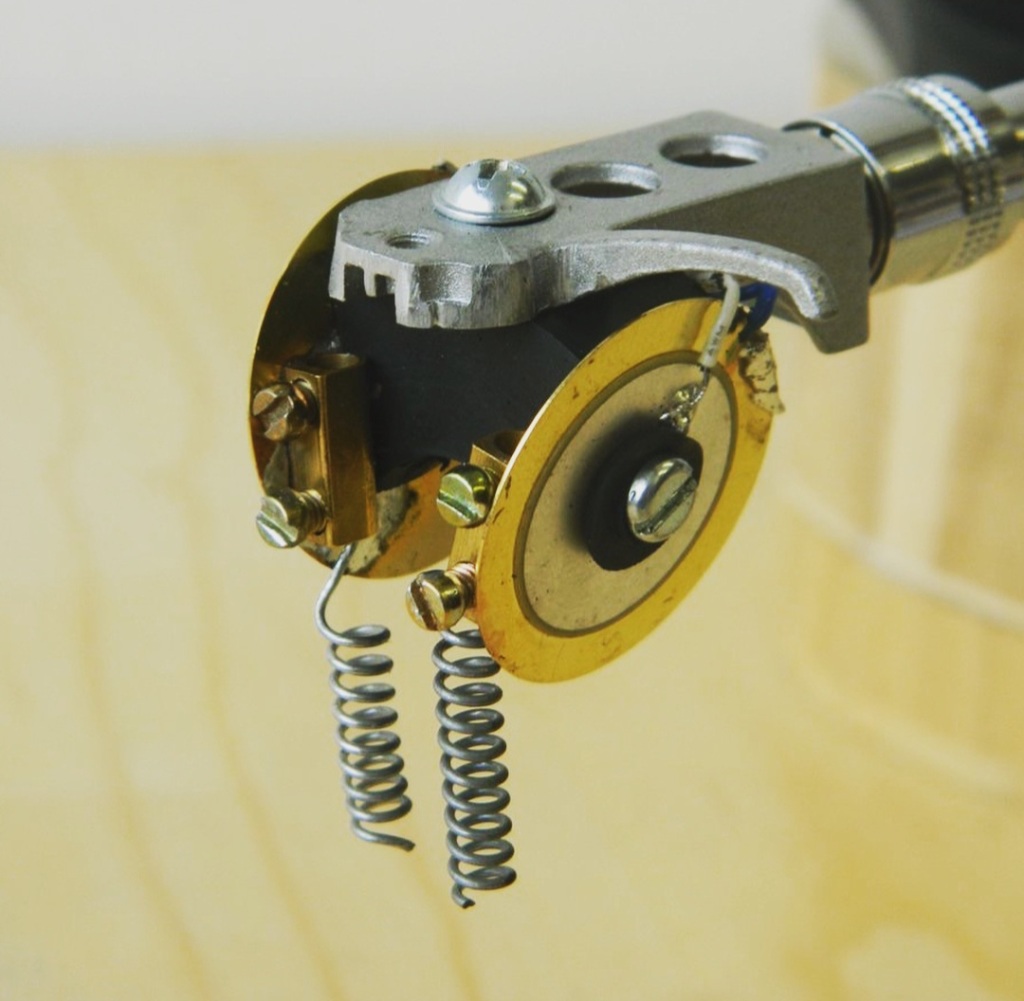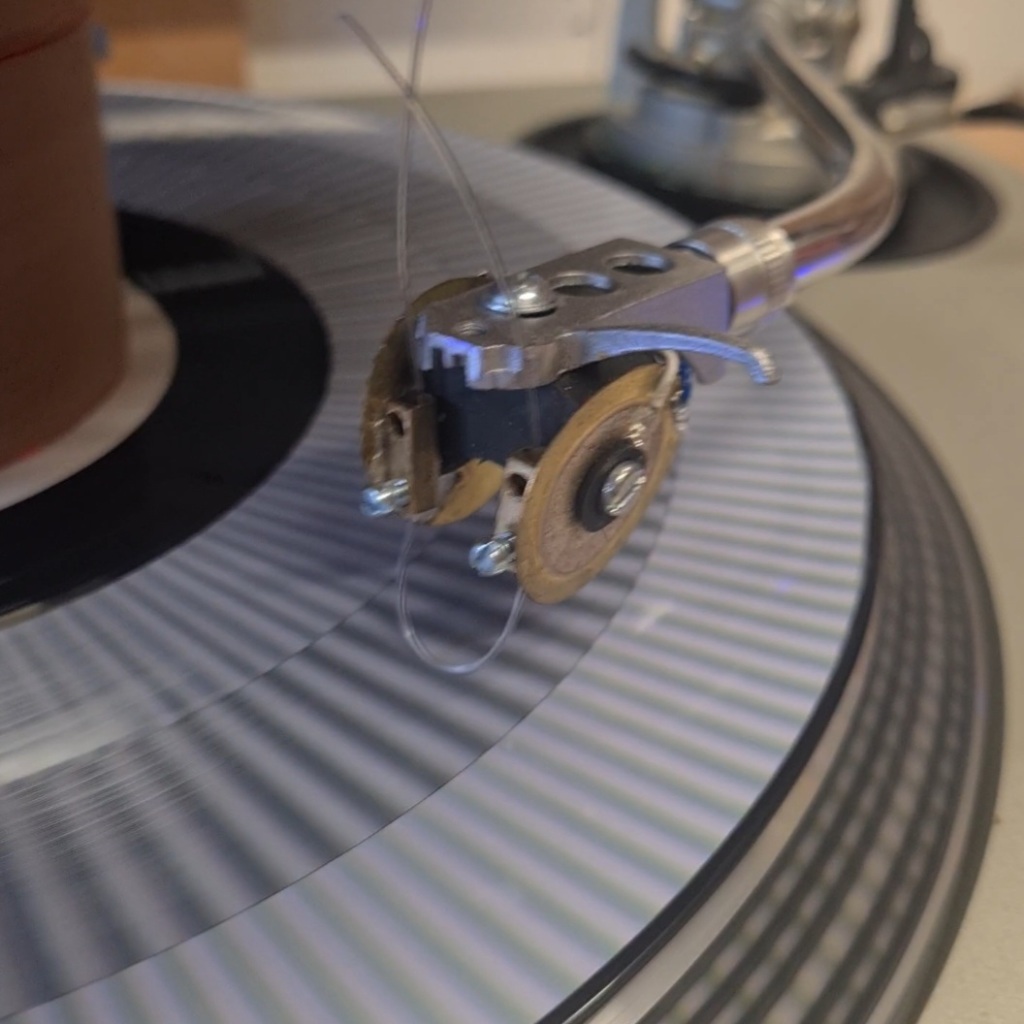DIY styluses for playing mangled-up records
I was asked recently for some advice about turntable styluses for playing broken and mangled records. Flo from Plattenbau Kru – who use stickers, scratches, cracks and breaks to modify their vinyl – said the ‘project is using up A LOT’, as might be expected. Offering a couple of suggestions led me down a bit of a rabbit hole, thinking about how people use alternatives to standard cartridges and needles to generate different effects.
Flo mentioned John Cage’s cactus stylus, which is something of a legend. In fact I’m not aware of him using it to play back records (though I could be wrong). There is some great footage of Cage playing the cactus as an instrument, and I believe that the amplification is provided via turntable cartridges (as opposed to contact mics as might be expected nowadays). A similar approach – replacing the needle in the cartridge with different material – is used by Andrea Borghi to play stone and marble disks. Borghi uses a piece of wire, with a physical twist and a fork like a snake’s tongue (as pictured on the front page of his website), to enable him to read the rough textures of the different materials, creating crackling and ever-changing textural soundbeds. Certain of his other compositions use close-miked crackling fires and other parallel pointillist sounds. Recently doing the rounds online have been clips of Leonel Vasquez’ Canto Rodado sculptures: rotating stacks of rocks with acoustically amplified scraping styluses, creating multi-pitched drones with some textural clattering. I can’t quite tell whether there’s some digital augmentation to the sound too, the output is so smooth and melodious.
Records can really be used to vibrate or activate any material that’s small enough to fit in the groove and light enough to be moved by it. It’s particularly satisfying to listen to a record acoustically via a paper cup with a pin attached to the bottom of it. Michael Ridge has used a plastic bank note to play sounds acoustically (amongst loads of great noise experiments on his youtube channel). One of my favourite explorations of acoustic activation is by Sseeaan Rroowwee, who uses screwed up balls of paper on a pair of decks, like in this live set. The sharp corners can contact the records at multiple points, generating sound from different parts of the record at the same time. Multiple balls of paper can create an extremely quiet cacophony, many tinny sounds playing concurrently. Physically manipulating the paper changes the contact points and hence the grooves – it’s an incredibly subtle and engaging performance. At the other extreme of multiple, changing points of contact is Evicshen’s stylus glove – fingernails made from styluses which provide a direct and tactile interface with her cast and modified disks.
An invaluable resource for turntable experimentation is the catalogue to the Broken Music exhibition in 1989, edited by Ursula Block and Michael Glasmeier. A quick glance through brought up Laurie Anderson’s turntable violin with stylus bow (a precursor to her perhaps better known tape bow violin); Joseph Beuys’ 1958 Stummes Grammophon (with a bone in place of the tone arm) and 1969/81 untitled gramophone with an amplified sausage attached to the soundbox; and details from pieces by Mauricio Kagel’s works including a dining fork and a sharp metal finger attachment being used to play records.
My own solution to playing mangled and abrasive records has been to use contact mics attached to a headshell, with screw mounts for different materials. There’s a similarity with gramophone needle attachments, which has reminded me that for acoustic shellac record players, alternative materials could be used to change the tone and volume of the playback. Steel gramophone needles are available in different loudnesses (presumably relating to the stiffness of the material) and sometimes bamboo needles were used for quieter playback. With my own headshell I’ve generally used cocktail sticks, kebab skewers, wire, springs, and plastic strimmer-blade line.


Most recently I wanted to play back a ‘tone’ record with lots of raised stickers on it, so didn’t want something that would damage the disk – fishing line proved very effective and also solved the difficult issue of making both sides of the stylus the exact same length to make contact with the record at the same time.

There’s lots more to say about alternative styluses, so this might be the first in a series of posts. And that’s before considering alternatives to turntables, alternatives to records, and other ways to read inscriptions by tracing a line.
Pingback: Five ways of using contact mics | Graham Dunning